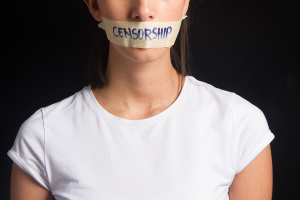Changing Culture: A Study in Cultural Engagement – Part 2
Our first example of cultural engagement is Prohibition (also known as the Noble Experiment), which lasted from 1920 to 1933, and banned the sale, manufacture, and transportation of alcohol for consumption. The prohibition movement, which actually started in the 1840s, suffered a brief respite during the Civil War and was revived in 1869 with the creation of the Prohibition Party. However, it was the establishment of the Woman's Christian Temperance Union in 1873 that would mobilize its constituents-primarily the Protestant church-to achieve Prohibition in 1920. This was' in effect' the beginning of the culture war as we have come to know it. At its peak, the Temperance Union boasted close to 400,000 members with chapters in almost every major city and town throughout North America.
The Temperance Union initiated and led one of the largest grass-roots movements in American history. The sheer enormity of this movement brought extraordinary political weight to bear on state and federal legislators. The goal was moral reform and the means were political pressure, eventually resulting in the 18th amendment to the constitution.
Upon achieving Prohibition, the famous preacher and evangelist Billy Sunday declared:
The reign of tears is over. The slums will soon be a memory. We will turn our prisons into factories and our jails into storehouses and corncribs. Men will walk upright now, women will smile and children will laugh. Hell will be forever for rent.
Like so many Christians of his day, Billy Sunday believed a great moral and religious victory had been won. He, and they, would be wrong.
Initially, Prohibition appeared to be working. Liquor consumption dropped, arrests for drunkenness fell, and the price for illegal alcohol rose higher than the average worker could afford.
However, shortly after Prohibition was passed, disobedience toward the law and law enforcement began in earnest. The intensity of the temperance movement was matched only by the inventiveness of those who wanted to keep drinking. Enforcing Prohibition proved to be extremely difficult. The illegal production and distribution of liquor, or bootlegging, became rampant, and the national government did not have the means or desire to try to enforce every border, lake, river, and speakeasy (an establishment illegally selling liquor by the drink) in America. In fact, by 1925 in New York City alone there were anywhere from 30,000 to 100,000 speakeasy clubs. The demand for alcohol was outweighing (and outwinning) the demand for sobriety.
In addition to the fact that Prohibition was largely ineffective at reducing (much less eliminating) alcohol consumption, it actually created new and more serious social problems. Crime became organized on a scale previously unseen-still a problem today-and crime syndicates accumulated unprecedented wealth and power. Violence skyrocketed as gangs fought for supremacy and corruption among government officials became an embarrassing national scandal. Economically, tax revenues of nearly $500 million annually disappeared from federal coffers, more than ten percent of federal income. In an effort to stop bootleggers from using industrial ethyl alcohol to produce illegal spirits, the government ordered the poisoning of industrial alcohols. Bootleggers responded by renaturing the alcohol at which point, the Treasury Department ordered the use of even more deadly poisons such as methyl alcohol; this killed more than 10,000 people during the period of Prohibition (Deborah Blum, "The Chemist's War: The Little-told Story of how the U.S. Government Poisoned Alcohol During Prohibition, with Deadly Consequences," Slate, Feb. 2010).
Near the end of Prohibition, Americans were weary of what had become a social and moral disaster. In 1932 wealthy industrialist John D. Rockefeller, Jr. summarized the sentiment of Prohibition's many disheartened supporters:
When Prohibition was introduced, I hoped that it would be widely supported by public opinion and the day would soon come when the evil effects of alcohol would be recognized. I have slowly and reluctantly come to believe that this has not been the result. Instead, drinking has generally increased; the speakeasy has replaced the saloon; a vast army of lawbreakers has appeared; many of our best citizens have openly ignored Prohibition; respect for the law has been greatly lessened; and crime has increased to a level never seen before.
Here's the point. As Robert George, fellow Christian and noted Princeton law professor points out, "the legal prohibition of anything works well only when supported by a widespread recognition of the evil of the thing prohibited" (Clash of Orthodoxies: Law Religion & Morality In Crisis, [Intercollegiate Studies Institute: Wilmington, DE, 2002]). Unfortunately for Prohibition, the public did not recognize "the evil of the thing prohibited." This is the problem with trying to moralize society through political coercion: good law follows the cultural and moral consensus; it cannot create it. In other words, law cannot change the culture as it relates to the actual beliefs and values of society.
Finally, the church's aggressive actions in the prohibition of alcohol helped to alter the public perception of the church from a valued social institution to an overbearing political interest group determined to impose its will on an unwilling public. The church's characteristic love of neighbor was diminished by a perceived desire to control thy neighbor. This perception would only embolden resistance to the church's role in the public square and its kingdom mission.



























